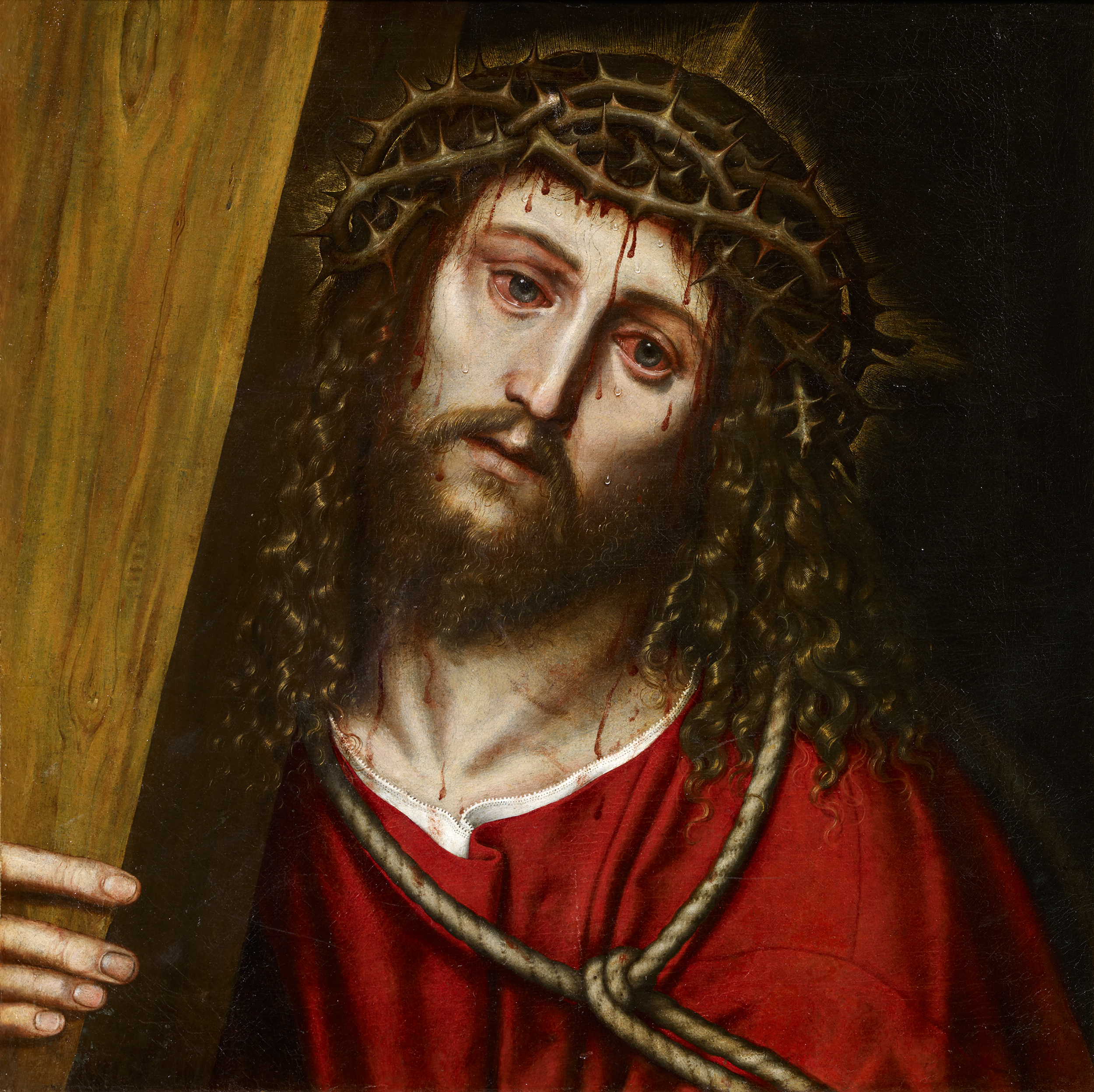
Niccolò Frangipane
Christ Bearing the Cross
1574-
Oil on canvas
40.5 x 40.5 cm
CTB.2000.43
-
© Colección Carmen Thyssen-Bornemisza en préstamo gratuito al Museo Carmen Thyssen Málaga
This work, unpublished until only recently, is one of the few signed and dated paintings by Niccolò Frangipane. The artist did not always use the same signature, as the David Meditating before the Head of Goliath in the Museo Civico in Padua bears the inscription “Ni.F.P.D”.
The subject of Christ carrying the cross along the Via Dolorosa to Golgotha is the most frequent in Frangipane's known works. There are nine surviving versions which display some compositional variations, as in two the figures are represented full-length – one in the Cappelletta di Santo Gesú in Gandino and the other in the sacristy of Santa Margherita in Brusaporto, Bergamo – while in the remaining paintings Christ is depicted half-length accompanied by some figures, such as executioners, Mary Magdalene or St Veronica. This is the case of the works belonging to the Galleria Doria-Pamphilj in Rome, although the version closest in time to the present work is the Christ Carrying the Cross in the Scuola di San Rocco in Venice, a painting that once belonged to the church of San Rocco and which Vasari attributed to Giorgione in 1550, although in the second edition of the Lives (1568) he referred to it as a work by Titian. This painting was very well known in its day and was the object of great devotion, as it was attributed miraculous powers; this explains why so many artists drew inspiration from it throughout the 16th century.
Frangipane can be considered to have drawn inspiration from this compositional concept for the present work, although here he is less concerned with the narrative aspect of the subject and concentrates on the isolated image of Christ in order to emphasise the pathos of the moment. Christ, who faces the spectator, is portrayed half-length, his head crowned with thorns, and slightly bent to the left, dressed in a red tunic that reveals the edge of a white undergarment, and with a rope knotted around his chest. Drops of sweat and blood run down Jesus sorrowful face. With his right hand he grips the cross, of which only a fragment of the upright is visible. The cross-bearing Christ or Portacroce is a traditional devotional image whose iconography dates back to early Christian art. Although in its remotest origins the subject was given a fundamentally symbolic meaning, and the cross, more than an instrument of martyrdom, was the symbol of the triumph of the Redeemer over death, from the 13th century onwards the narrative and dramatic aspects of the scene began to be emphasised. This latter interpretation rapidly gained ground in the second half of the 16th century, when the Counter-Reformation found images to be an effective means of influencing the minds of the faithful. Sebastiano del Piombo and Titian in Italy and Luis de Morales and El Greco in Spain are examples of painters who produced works of this kind and attest to the success enjoyed by Passion themes. In the present work Frangipane sets off the Christ against a dark background, heightening the figure's dramatic quality and the sensation of loneliness. He shuns the idea of defining a specific physical space, since his aim is not to narrate the biblical event, but to represent a devotional image. The artist stresses both the physical and the psychological suffering of Christ. This explains his detailed description of the heavy crown and its sharp thorns, and the depiction of the blood dripping down Christ’s face and body, with particular emphasis on the tearful red eyes which express intense pain and a silent surrender and resignation before the sacrifice. The construction of Frangipane's painting recalls, rather than the Christs of Giorgione and Titian, those painted by Sebastiano del Piombo, in particular those of the Prado and the Hermitage; however, he approaches the subject with greater realism than the previously mentioned Italian painters or El Greco, owing probably to the influence of Northern European models that is evident in the execution, as in the paintings by Morales. The precise brushwork and the detailed handling of textures, from the rigidity of the crown to the soft shine of the curly hair, recall the aesthetic of Flemish art. Nevertheless, the chromatic intensity of the red cloak and the importance attached to light, particularly in the treatment of Christ’s face, link this painting closely to the Venetian world in which the artist was trained.
Trinidad De Antonio